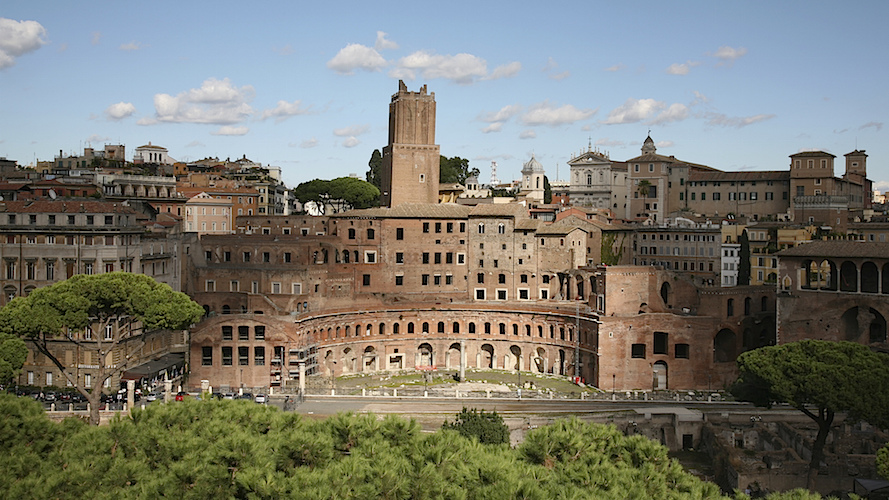The "Forum Trajani" (Taschen) or "The Market of Trajan" was built during ca. 100-112 C.E. (Kleiner) by the architect Apollodorus of Damascus (Khan Academy) on the Quirinal Hill in Rome (Kleiner). Apollodorus used predominantly bricks to construct the market and only used other building materials for door frames within the market (Taschen). The Market was named after Emperor Trajan, who ruled Rome from 98-117 C.E. (Khan Academy). Within Rome, The Market of Trajan was located around Roman Forums and other Trajanic buildings to represent the connections between the structures. The main purposes of the market were to relocate the shops and offices that were displaced by the building of the market and other structures around it (Khan Academy) and to guard items of importance in Rome. The market looked strikingly like an ancient mall as it was a covered space with shops and vendors. The market had five levels (Taschen), the two main levels, the ground floor, and upper levels (Khan Academy). The ground floor consisted of "cashiers of the imperial treasury" (Khan Academy), while the upper levels housed "imperial officials associated with the grain dole" (Khan Academy). On the higher floors, the Aulia (a large two-storied hall) held six groin vaults (the intersection of two tunnel vaults) that guarded artifacts such as distributions of free food or large monetary payments (Ramage). Finally, all levels of the Market of Trajan took the shape of a semi-circle, small shops/establishments were placed inside the semi-circle, also taking its shape (Ramage).
The layout of Trajanic buildings (including Trajan's Market) back then

(Khan Academy)
An image of the Market of Trajan now

(Khan Academy)
-Will Schnepf




No comments:
Post a Comment